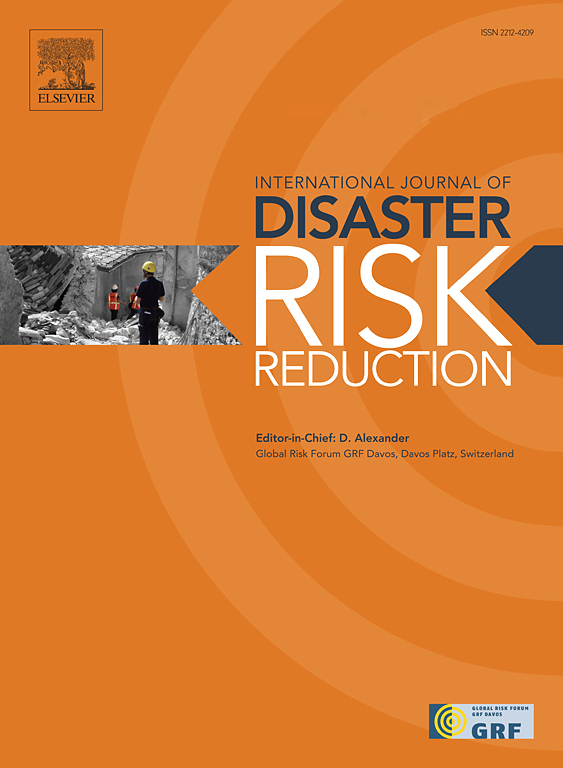Seismic assessment and FRCM strengthening of post-war masonry residential buildings: A case study on building typologies
IF 4.2
1区 地球科学
Q1 GEOSCIENCES, MULTIDISCIPLINARY
International journal of disaster risk reduction
Pub Date : 2025-03-01
DOI:10.1016/j.ijdrr.2025.105341
引用次数: 0
Abstract
This study presents a comprehensive seismic vulnerability assessment of early post-war multi-residential unreinforced masonry (URM) buildings in Slovenia, focusing on structures built between 1945 and 1963. Using an approach that links architectural configuration with structural behavior, over 400 buildings in Ljubljana were categorized into 24 distinct typologies based on shape, height, and structural characteristics. Four representative building types underwent detailed seismic performance evaluation using nonlinear static analysis. The analysis revealed that none of the examined buildings met current Eurocode 8 seismic requirements. Two retrofitting scenarios for enhancing the seismic resilience using Fiber Reinforced Cementitious Matrix (FRCM) were investigated: a selective approach focusing on critical structural elements, and a comprehensive strategy applied to all load-bearing walls. While both scenarios improved seismic performance, they generally fell short of achieving full Eurocode 8 compliance. Interestingly, the selective retrofitting approach demonstrated higher efficiency in some cases. A novel efficiency metric revealed that FRCM retrofitting was generally more effective in directions with lower initial wall percentages. The study highlights the challenges in upgrading existing URM buildings to modern seismic standards and suggests the need for typology-specific approaches to assessment and retrofitting. The findings underscore the importance of tailored strengthening strategies and indicate that achieving full compliance may require more comprehensive or alternative techniques for this vulnerable building stock.
求助全文
约1分钟内获得全文
求助全文
来源期刊

International journal of disaster risk reduction
GEOSCIENCES, MULTIDISCIPLINARYMETEOROLOGY-METEOROLOGY & ATMOSPHERIC SCIENCES
CiteScore
8.70
自引率
18.00%
发文量
688
审稿时长
79 days
期刊介绍:
The International Journal of Disaster Risk Reduction (IJDRR) is the journal for researchers, policymakers and practitioners across diverse disciplines: earth sciences and their implications; environmental sciences; engineering; urban studies; geography; and the social sciences. IJDRR publishes fundamental and applied research, critical reviews, policy papers and case studies with a particular focus on multi-disciplinary research that aims to reduce the impact of natural, technological, social and intentional disasters. IJDRR stimulates exchange of ideas and knowledge transfer on disaster research, mitigation, adaptation, prevention and risk reduction at all geographical scales: local, national and international.
Key topics:-
-multifaceted disaster and cascading disasters
-the development of disaster risk reduction strategies and techniques
-discussion and development of effective warning and educational systems for risk management at all levels
-disasters associated with climate change
-vulnerability analysis and vulnerability trends
-emerging risks
-resilience against disasters.
The journal particularly encourages papers that approach risk from a multi-disciplinary perspective.
 求助内容:
求助内容: 应助结果提醒方式:
应助结果提醒方式:


